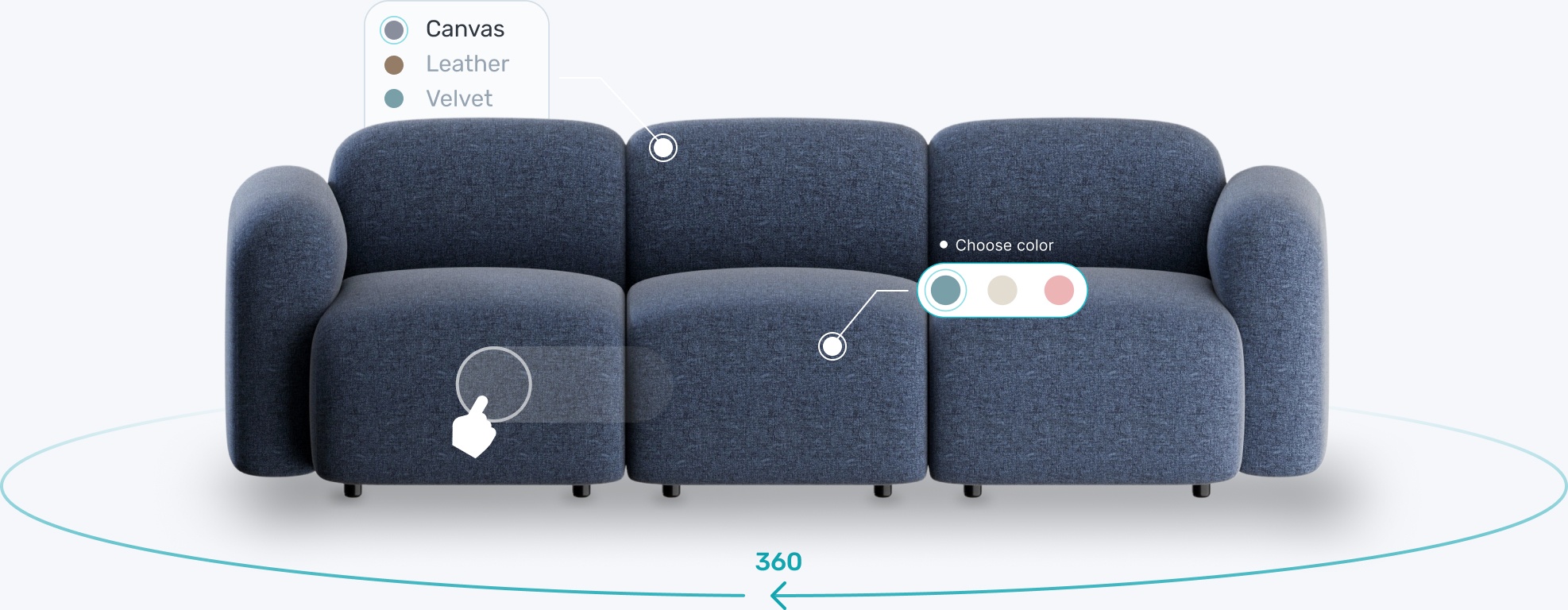Transform your eCommerce strategy with 3D & AR





Forget about 2D product listings. Google Shopping has evolved. Now, any store can integrate AR and 3D models into their Google search results. 2022’s edition of Google Marketing Live announced a turning point in the way we shop online. AR product listings are now within touching distance of even the smallest brands, offering a host of new ways to reach and engage customers.
As Bill Ready, Google’s head of Commerce, Payments and NBU puts it, “if you have 3D models of the products you sell, Google can now surface them to shoppers looking for similar items right on search.”
Moving forward, interactive 3D model creation is now going to be a core aspect of Google Shopping. That’s a huge deal for eCommerce operations in almost every sector. So let’s dig deeper and see what this means for CGTrader’s clients and partners.
Google has chosen to foreground AR to serve what Ready calls omni-buyers. The search giant sees reaching these omni-buyers as critical for eCommerce companies in the near future.
These shoppers don’t just search for text terms, choose products, and buy online. They might search for items in stock via Google, head to a nearby store, and open their phone to browse items while they tour the store.
This reflects the enduring popularity of bricks and mortar stores, along with the fact that over 2.2 billion people now shop online. Shoppers want easier ways to find the products they need. In that regard, AR is the perfect tool.

With custom 3D models, buyers can resize and rotate products. They can zoom, recolor, add textures, and tour locations. So it’s not surprising when Ready says that Google “AR will become the next permanent staple in how shoppers interact with brands and products digitally.”
Google isn’t the only web giant active in the AR ad space. A variety of other social media platforms have taken steps to integrate advertising, shopping, and Augmented Reality.
For instance, Snapchat’s AR lenses combine digital images with photographs or smartphone video feeds, while full body scanning is also being rolled out to power clothing try-on tools. Meta/Facebook has also joined the party, partnering with CGTrader powering 3D ads on Facebook.
Even Twitter’s text-heavy format is adapting to AR ads, with a tool called Product Explorer adding interactive ads to user feeds.
However, Google is an outlier in the online shopping world. An estimated 1 billion shopping sessions occur via Google’s services every day. That’s why it’s vital to find an effective way to marry Google Shopping and AR ads. And every brand needs to find a reliable source for 3D model creation.
AR advertising isn’t a future trend. It’s here now, and forward-thinking brands have been exploiting AR’s potential for years.
For instance, in 2021 apparel brand American Eagle partnered with Snapchat to create the “AE x Snapchat AR Jeans Guide”. This guide was designed to reach the crucial Gen Z demographic, and the tactic worked, with an uplift of 13% in ad awareness and boosts in time spent engaging with American Eagle’s social media content.
Other retail brands have used 3D model creation in customized eCommerce stores. IKEA is the most well-known here, breaking ground with its hugely successful Place app. But the furniture seller isn’t alone.
Walmart has partnered with Zeekit to offer virtual fitting rooms. Wayfair’s View in Room tool makes interior 3D design easier, while eyewear brand Warby Parker has crafted a clever app to help buyers find the perfect glasses.
The entry of Google Shopping into the AR ad space builds on this ads innovation, providing a way to access vast numbers of shoppers with interactive, engaging 3D experiences.
Some brands have already started to experiment with AR ads on Google Shopping, and they provide a tantalizing glimpse of what could be achieved.
Since 2020, fashion and cosmetics brands have enabled Google Shopping browsers to virtually try-on different products. Giants like Estee Lauder, MAC and L’Oreal have taken advantage of this immersive ad experience, making it easy for buyers to match make-up to their skin tone and style.
Now, that kind of virtual shopping experience is available across all sectors. Apparel brand Burberry have been early-adopters, creating an app that lets Shopping users overlay handbags onto real world settings.
In the future, expect 3D models for Google search to become mainstream. That could happen rapidly, and now is the ideal time to start transforming 2D catalogs into 3D assets.
Small and large retailers can achieve stellar results by switching from static images to interactive 3D models for ads.
The Google Manufacturer Center has been overhauled and updated to handle 3D ad creation, and you can seamlessly integrate Shopify or WooCommerce stores. All you need to do is source the right 3D assets.
CGTrader is an existing partner for Google Swirl Ads (3D) and can now partner with brands to optimize their Google Shopping listings for the age of Augmented Reality. Our community of designers will create large volumes of custom 3D models at high quality levels and minimal cost. And we can deliver 3D assets in the perfect file format, featuring anything from automotive accessories to boutique furnishings and fashion and accessories.
Embracing AR is an easy way to boost your Google Shopping revenues. So get in touch with the CGTrader team. Our experience and expertise is the perfect starting point for any brand’s AR journey.




